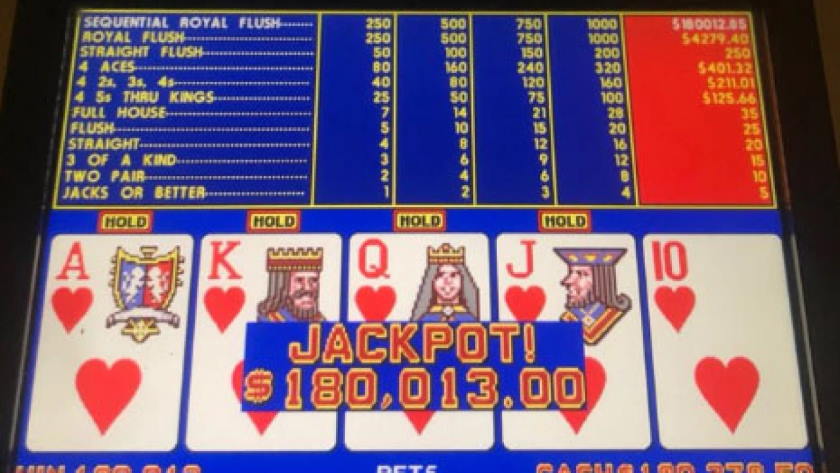Probabilities of winning the Jackpot in Video Poker
Well, Jack and me are still working our way through these bottles. Not so many of them left now, but we’re not worried — the wannabe supplier got the nod so we’ll get more of his good stuff. As you’ll realize, I’m not an outdoor kinda guy ’cept when I tear myself away from the casinos in my yacht and go where the wind wants to go for a week or so. Even then, my satellite system gets me into the online casinos so, when the real and video poker itch gets too much, I can scratch for a while.
Even though I’ve never played the game, I’m thinking these articles of mine are a little like a golf course. And this piece about video poker is one of these tricky little par threes that some of you’ll ace with no problems, and others will find a little more trying than usual. I’ve been talking about the size of the bankroll you’d need if you were serious about turning your video poker itch into a professional paying game. Now, we’re gonna keep on thinking about streaks of bad luck in video poker where you never hit a jackpot.
Volatility of Online Video Poker
Talking probabilities, one way of describing these streaks is using volatility. My daddy usta say volatility means unconditional variance. He was into all these fancy way of saying things. What he meant was that you keep a record of everything that is relevant over time. So, in video poker, we note every flop, what we hold, what we draw and the result.
Every observation is given equal weight to produce the standard deviation of the return we expect over a defined period time, e.g. an annualised calculation. This doesn’t work badly for video poker over time, but if you suddenly wanna calculate current volatility, just looking at the most recently observed data, you’re imposing conditions on or weighting the variances.
So all your trend analysis gets more like guesswork. A different and perhaps a better way of thinking about this is to define the range of the values from the largest to the smallest. Now when my daddy was schooling me in math, he usta express upper and lower bounds for the volatility as functions of the range r and sample size n. But we’re not talking about some life assurance or stock market risk assessment system where values are going to move in a more predictable narrow-range pattern.
Video Poker “RNG”
Because the video poker machines are driven by a Random Number Generator and there’s independence between each draw, it ain’t never easy to get reliable results outa volatility calculations. But you see people complaining about volatility when they start on about multihand video poker machines. I reckon this is not so much to do with volatility, it’s more to do with the volume of play. Let’s have you sit down at an old-style video poker machine with only one line. Now this is a machine you can play faster.
When I was younger, I could hit 600 hands an hour. Some folks say they can hit up to 800 hands an hour and catch a fish this big. But let’s give you a fair speed of 500 hands per hour on a 9-6 Jacks or Better machine for two hours. The standard deviation for 1,000 hands playing one line is sqrt(number of hands * variance), i.e. sqrt(1000*19.510) = 140 bets (rounded up).
Now let’s put you on a machine that plays four lines. You beginners’re gonna find these video poker machines slower to play, so let’s say you hit 300 hands per hour for two hours. You’re now playing sqrt(4 * the number of hands * (variance + three linked lines * the covariance)), i.e. sqrt(4*600*(19.510 + 3*1.966)) = sqrt 60,979 = 247 bets (rounded up).
Video Poker Odds Online
So we wanna make a rough approximation of the swings when playing four lines — and that’s about 76% higher than playing the same coins on a single line. So ya gotta risk more capital to work through to the other side of a cold streak. Ya gotta remember that the distribution of results is non-normal for the number of hands you play in a session.
There ain’t no way you can use the normal distribution estimate of plus or minus two standard deviations to give 95% confidence of the results. The better way to estimate confidence is within (1 – 1/(# standard deviation)^2), i.e. you expect to be within plus or minus two standard deviations 75% of the time, and within plus or minus 3 standard deviations 88.9%.
This has all kinda strained my brain. Don’t usually do much calculating these days so a lot more alcohol’s gonna flow to make me feel better about it all. That’s me done for the day. Catch ya ’round.

